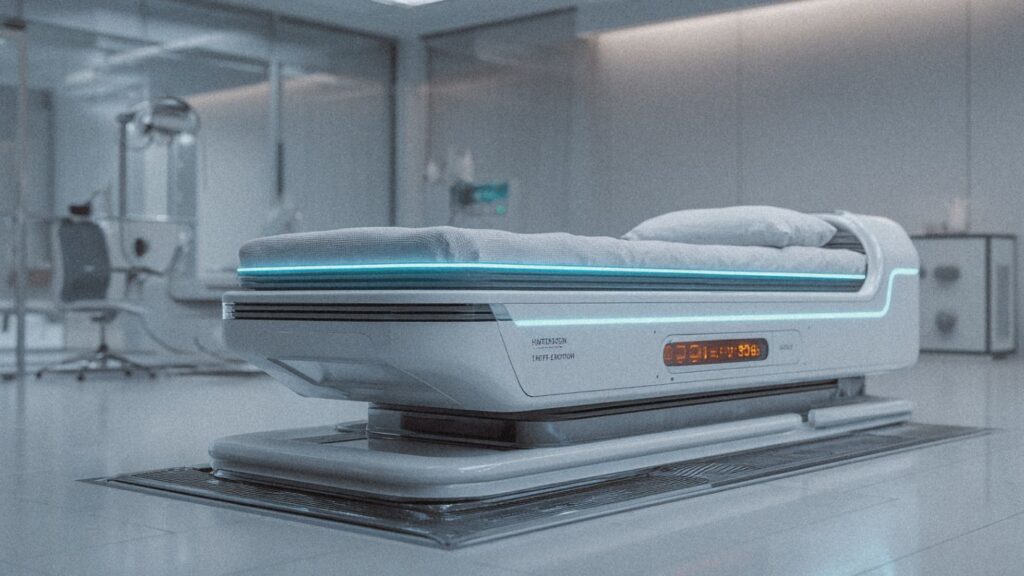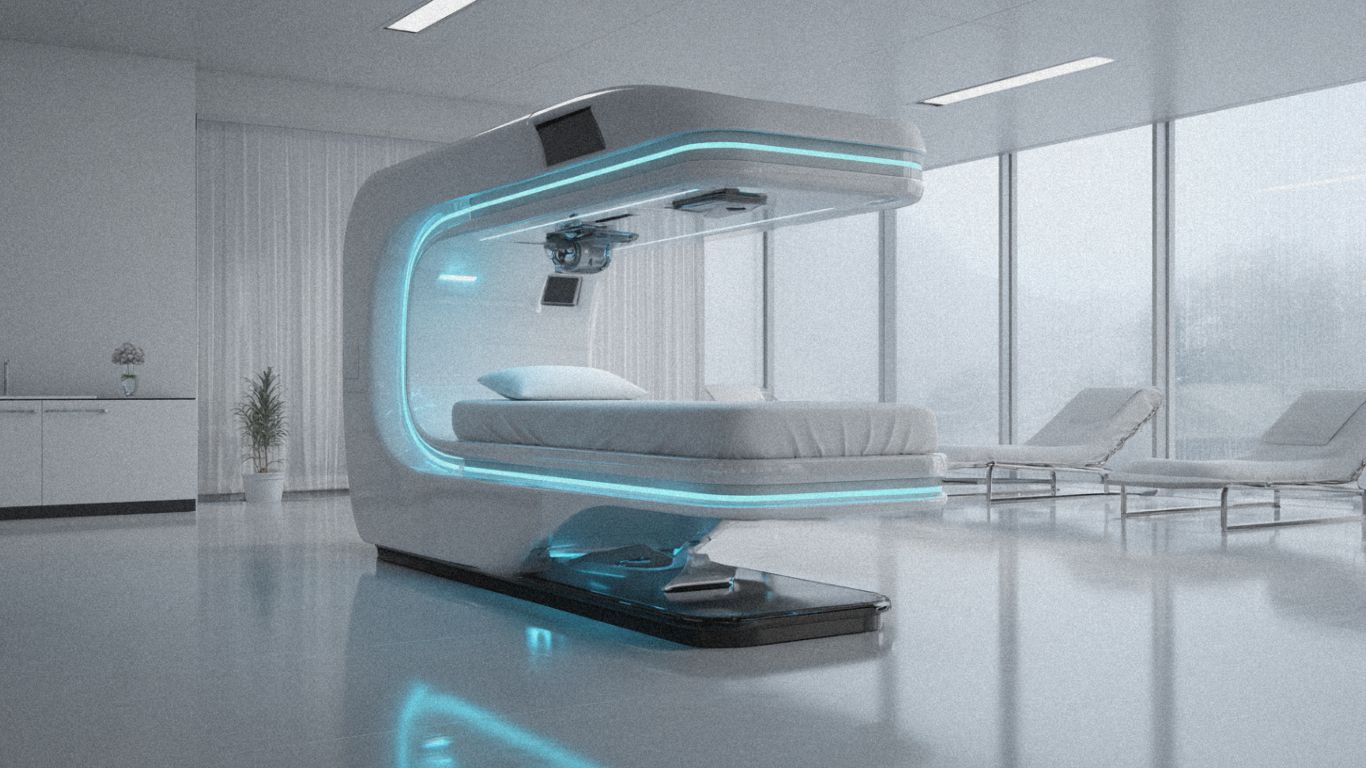HistoSonics has secured a transformative investment that values the innovative medical device company at $2.25 billion, with a consortium led by Johnson & Johnson Development Corporation (JJDC) and Jeff Bezos’ Expeditions taking a majority stake in the pioneering histotripsy technology developer. This substantial valuation reflects growing investor confidence in noninvasive therapeutic technologies and positions HistoSonics for aggressive global expansion of its groundbreaking Edison tumor ablation system.
Revolutionary Histotripsy Technology
HistoSonics has developed histotripsy, a breakthrough noninvasive therapy that uses precisely focused ultrasound energy to mechanically destroy diseased tissue at the cellular level. Unlike traditional ablation methods that rely on heat or cold, histotripsy creates controlled cavitation bubbles that physically break down targeted tissue while preserving surrounding healthy structures.
The Edison system represents the culmination of over a decade of research and development in histotripsy technology. The platform can treat various solid tumors without incisions, ionizing radiation, or thermal damage, offering patients a truly noninvasive alternative to surgical resection or conventional ablation techniques.

Strategic Investor Validation
The participation of JJDC and Bezos Expeditions brings significant strategic value beyond the financial investment. Johnson & Johnson’s involvement through its development arm signals strong validation of histotripsy’s commercial potential and provides access to J&J’s global healthcare infrastructure, regulatory expertise, and established physician relationships.
Bezos Expeditions’ participation reflects the Amazon founder’s continued focus on transformative healthcare technologies that could reshape patient care delivery. The investment firm has previously backed companies developing breakthrough medical technologies, and its involvement often signals technologies with substantial market disruption potential.
Clinical Evidence and FDA Progress
HistoSonics has built compelling clinical evidence supporting histotripsy’s safety and efficacy across multiple tumor types. The Edison system has demonstrated successful tumor destruction with minimal side effects and faster recovery times compared to traditional surgical approaches.
The company has been advancing through FDA regulatory pathways with multiple clinical trials demonstrating histotripsy’s potential in treating liver tumors, kidney masses, and other solid malignancies. The noninvasive nature of the therapy addresses significant unmet medical needs for patients who are not surgical candidates or prefer less invasive treatment options.

Global Market Expansion Strategy
The substantial funding will fuel HistoSonics’ international expansion plans, targeting markets in Europe, Asia-Pacific, and other regions where regulatory pathways for innovative medical devices are becoming increasingly accessible. The global market for tumor ablation technologies is projected to reach billions of dollars as minimally invasive cancer treatments gain broader adoption.
International expansion will require navigating diverse regulatory environments, establishing local clinical evidence, and building physician training programs. The company’s strong financial position enables comprehensive market development strategies that could accelerate global adoption of histotripsy technology.
Competitive Advantages in Ablation Market
Histotripsy offers several distinct advantages over existing ablation technologies. Unlike radiofrequency ablation or cryotherapy, histotripsy doesn’t rely on thermal effects, reducing risks of damage to nearby structures such as blood vessels, nerves, or critical organs. This precision could expand treatment options for tumors in challenging locations previously considered unsuitable for ablation.
The mechanical nature of histotripsy also potentially reduces treatment variability related to tissue properties that can affect thermal ablation techniques. This consistency could improve treatment predictability and outcomes across diverse patient populations and tumor characteristics.
Technology Platform Potential
Beyond current tumor applications, histotripsy technology may have broader therapeutic potential across various medical conditions requiring precise tissue destruction. Research continues into applications for treating benign tumors, vascular malformations, and other conditions where noninvasive tissue modification could provide clinical benefit.
The platform approach allows HistoSonics to develop multiple applications from a single technological foundation, potentially creating diverse revenue streams and market opportunities. This versatility enhances the company’s long-term commercial prospects and justifies premium valuation multiples.
Manufacturing and Scalability Challenges
Scaling production of sophisticated medical devices like the Edison system requires substantial manufacturing capabilities and quality systems. The new funding will support development of manufacturing infrastructure capable of meeting global demand while maintaining the precision required for histotripsy systems.
Medical device manufacturing involves complex supply chains, regulatory compliance across multiple jurisdictions, and rigorous quality control processes. HistoSonics must balance rapid scaling with maintaining the reliability and safety standards essential for medical device success.
Physician Training and Market Development
Successful commercialization of histotripsy technology requires comprehensive physician education and training programs. While the noninvasive nature simplifies some aspects of the procedure, optimal patient selection and treatment planning require specialized expertise that must be developed across target markets.
The company’s expansion strategy includes establishing centers of excellence, developing standardized training curricula, and building ongoing support systems for adopting physicians. These market development investments are crucial for achieving widespread clinical adoption and realizing the technology’s commercial potential.
Regulatory Strategy and Approvals
HistoSonics continues advancing through regulatory approval processes in multiple markets, with strategies tailored to different regional requirements and medical device pathways. The company’s regulatory approach balances speed to market with comprehensive clinical evidence development needed for broad clinical adoption.
Success in obtaining regulatory approvals across major markets will be critical for justifying the company’s valuation and achieving revenue growth targets. The regulatory landscape for innovative medical devices continues evolving, creating both opportunities and challenges for breakthrough technologies like histotripsy.
Future Outlook and Market Impact
The substantial valuation and strategic investor backing position HistoSonics to become a major force in the evolving landscape of cancer treatment technologies. If successful, histotripsy could establish new standards of care for treating solid tumors, potentially reducing healthcare costs while improving patient outcomes and quality of life.
The investment represents broader investor confidence in noninvasive therapeutic technologies that could transform medical practice. HistoSonics’ success could catalyze additional investment and development in similar breakthrough approaches to treating previously challenging medical conditions.
As the company executes its global expansion strategy, the medical community will closely monitor clinical outcomes and adoption rates to assess histotripsy’s ultimate impact on cancer care and broader medical practice.



